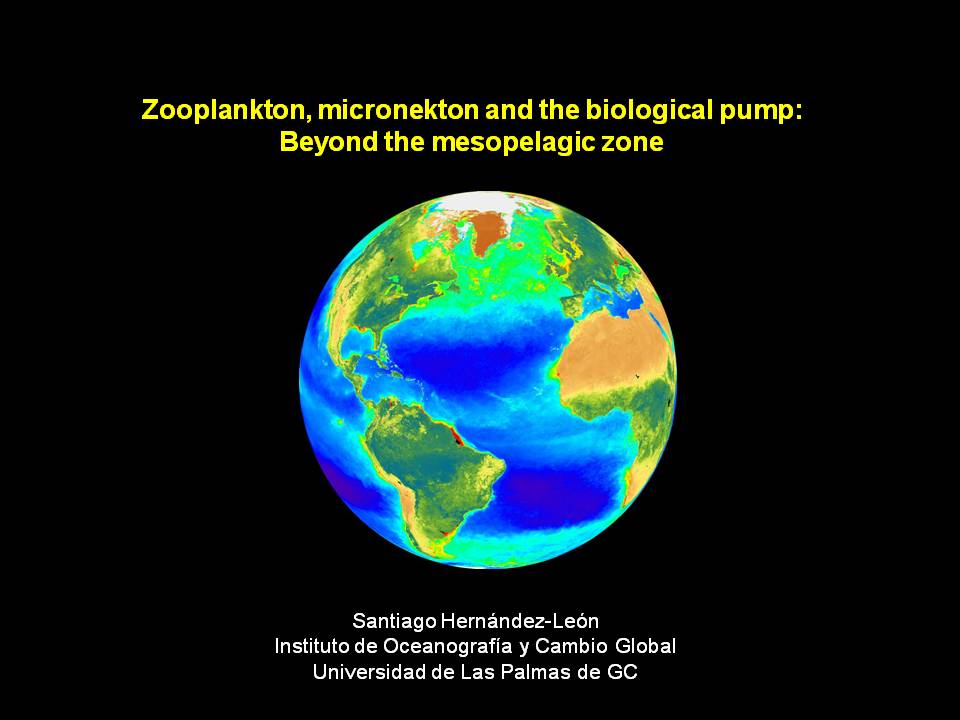El Dr Santiago Hernández León inaugura el segundo ciclo de Ciencia compartida
- Compartir en Linkedin
- Compartir en Facebook
- Compartir en las redes:
 El Dr. Santiago Hernández León ofrecerá este martes 2 de octubre una charla con el título Zooplankton, micronekton and the biological pump: Beyond the mesopelagic zone. Se inaugura así el Segundo Ciclo de Ciencia Compartida, que continuará durante este curso académico todos los martes a las 13 horas en la Sala de Grado de la Facultad de Ciencias del Mar.
El Dr. Santiago Hernández León ofrecerá este martes 2 de octubre una charla con el título Zooplankton, micronekton and the biological pump: Beyond the mesopelagic zone. Se inaugura así el Segundo Ciclo de Ciencia Compartida, que continuará durante este curso académico todos los martes a las 13 horas en la Sala de Grado de la Facultad de Ciencias del Mar.
Don Santiago Hernández León pertenece al Instituto de Oceanografía y Cambio Global (Universidad de Las Palmas de Gran Canaria). Es Doctor en Ciencias Biológicas. Premio del Gobierno de Canarias a la Mejor Tesis Doctoral en 1986, Catedrático de Universidad en el área de conocimiento de Zoología. Ha sido Vicedecano de la Facultad de Ciencias del Mar desde 1994 a 1998 y Decano desde 2004 a 2009. Ha realizado estancias en Francia, Estados Unidos y Noruega. Ha publicado más de 100 artículos, la mayoría en revistas internacionales con índice de impacto y ha participado en más de treinta proyectos de investigación siendo investigador principal de diez de ellos. Ha realizado más de cuarenta campañas oceanográficas, ocho de ellas en áreas polares (Ártico y Antártida). Trabaja en el estudio del papel del océano en el cambio climático así como en la influencia de éste sobre las comunidades marinas.
Resumen de la charla: Migrant biota transports carbon to the mesopelagic zone due to their feeding at the shallower layers and their defecation, respiration, excretion and mortality at depth. The so-called active flux has been considered a small number compared to gravitational sinking. Recent assessments in subtropical waters show an important effect due to predation by interzonal diel vertical migrants (DVMs). The consumption and subsequent transport of epipelagic zooplankton by DVMs (mainly micronekton) to the mesopelagic zone seemed similar to the mean gravitational export. However, the consequences of this active transport to the bathypelagic zone are almost unknown. Here, we show the effect of the Atlantic and Pacific equatorial upwelling systems on the vertical distribution of acoustic backscatter from the surface to bathypelagic depths. The enhancement of the acoustic signal below the upwelling zone was observed to reach 4000 m depth, coinciding with high abundances and activity of bacteria at those depths. The results suggest an active carbon transport from the epipelagic driven by zooplankton and micronekton, enhancing the efficiency of the biological pump and giving an insight about the fate of an increased productivity at the shallower layers of the ocean
